Women in Comics: Do the Super Ladies Need Saving? Part 5
Intro
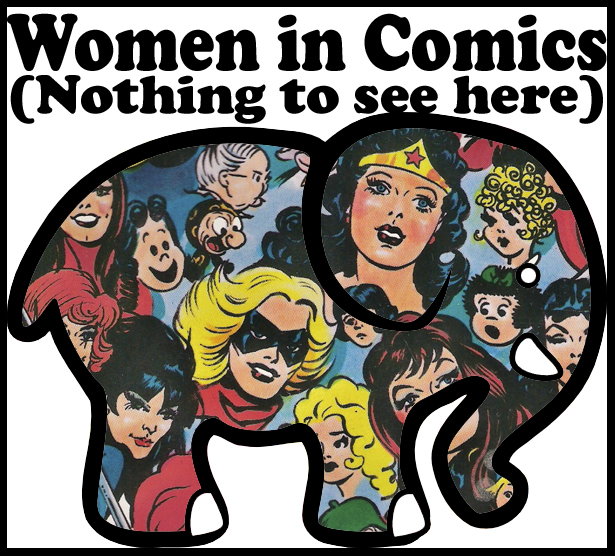 There are several qualities that have hurt the overall portrayal of women in comics and several suggestions from the interwebs and myself that I think could help further equality in comics. That's what this new series, "Women in Comics: Do the Super Ladies Need Saving?" is all about. Inspired from a Gender Studies inquiry project and a "Gender and Comics" survey I created a couple of weeks back, this series will take an indepth look at women's portrayal in comics. It was originally going to be one feature, but after hitting almost 4,000 words I thought people were much more likely to stay awake if I made it into multiple parts.
There are several qualities that have hurt the overall portrayal of women in comics and several suggestions from the interwebs and myself that I think could help further equality in comics. That's what this new series, "Women in Comics: Do the Super Ladies Need Saving?" is all about. Inspired from a Gender Studies inquiry project and a "Gender and Comics" survey I created a couple of weeks back, this series will take an indepth look at women's portrayal in comics. It was originally going to be one feature, but after hitting almost 4,000 words I thought people were much more likely to stay awake if I made it into multiple parts.
If there's a particular topic you'd like me to talk about, let me know! I already have a lot planned including the way women in comics look, the way they dress, how women of race and other ethnicities are treated in comics, how women in comics are abused and I'll be listing some empowering women in comics. But today, it's a more positive piece about some empowering women in comic books.
For most of the examples I'm going to be using the two mainstream comic book companies Marvel and DC Comics. Independents and other publishers like Image Comics and Dynamite Entertainment have their problems too, but the "Big Two" are the comics that are most widely read, meaning they have a huge impact when it comes to how women are portrayed in comics. These examples are also not limited to just superpowered heroines but also non-superpowered beings and villains.
Please check out the first four parts of "Women in Comics: Do the Super Ladies Need Saving?"
Part 1 - Beauty: One Size Fits All?
Part 2 - Victoria Secret-esque Styles
Part 3 - What's so bad about a broken back?
Part 4 - Time for a close-up...
Empowering Women in Comics
There are paragraphs worth of problems with women in comics. But there are several positive female characters in comics and I'd like to spotlight a couple of my favorites and urge writers to create more characters like them.
Princess Adrienne
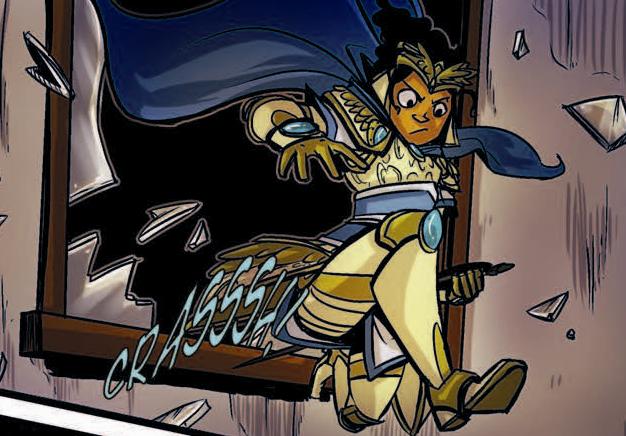
The princess of
Princeless, Princess Adrienne's story is all about a princess who decides she's going to save herself. Adrienne is smart and she doesn't let stereotypes about women stop her in her quest to save her sisters. The publishers of the comic, Action Lab, seem to have a good habit of having powerful women in their comics. Not only is there Princess Adrienne, but she has a friend named Bedelia who defies the gender norms of their fantasy land by being a blacksmith and Jamal Ingle created the rambunctious, heroic and covered-up super heroine
Molly Danger. Even their adult line has some notable females like Karen from
Sensory Distortion who isn't your typical goth teenager.
Firestar
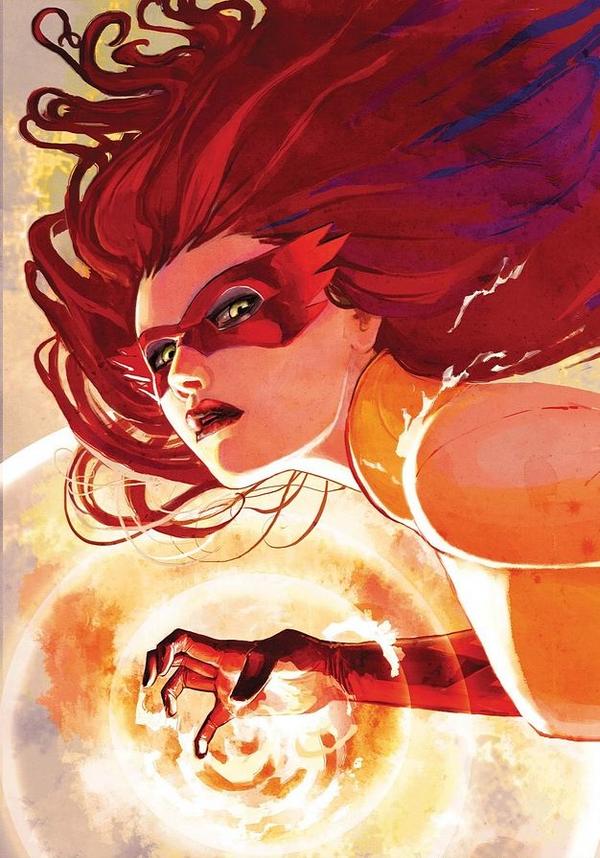 Angelica Jones, a.k.a. Firestar, was bullied in school and despite that she's as sweet as could be – even to her abusers! She also is a breast cancer survivor who was still able to stay strong and even crack some jokes while she was battling for her life, not unlike what she does everyday when she goes out and saves people! The cancer took all of her hair but not her spirit and she was never one to harp on her looks, a characteristic I always loved about her! She lead her own team and even stopped superheroing for a while so she could get a college degree and make something of herself without the mask.
Spider-Girl
Angelica Jones, a.k.a. Firestar, was bullied in school and despite that she's as sweet as could be – even to her abusers! She also is a breast cancer survivor who was still able to stay strong and even crack some jokes while she was battling for her life, not unlike what she does everyday when she goes out and saves people! The cancer took all of her hair but not her spirit and she was never one to harp on her looks, a characteristic I always loved about her! She lead her own team and even stopped superheroing for a while so she could get a college degree and make something of herself without the mask.
Spider-Girl
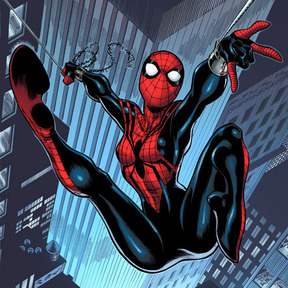 Again, possibly my favorite comic book character of all-time (regardless of gender), May "Mayday" Parker is another intelligent girl who manages to study for exams, play basketball and become a super heroine. May cares about others and even when she disobeys her parents she does it for the greater good.
Harper Row
Again, possibly my favorite comic book character of all-time (regardless of gender), May "Mayday" Parker is another intelligent girl who manages to study for exams, play basketball and become a super heroine. May cares about others and even when she disobeys her parents she does it for the greater good.
Harper Row
 You don't need to save someone's life to be considered a superhero. Harper Row has to be my favorite thing out of DC since the New 52 started. When her gay brother was beaten by gay-bashers and had the words "fag" shaved on the back of his head in Batman #12, Harper did the same thing to her hair to support her brother. She's a character who isn't afraid to fight homophobia or comfort Batman when he really needs it. She also refrains from letting herself be manipulated by her crooked father despite their shared blood. She's such an inspiration I was begging DC to make her Robin.
Oracle
You don't need to save someone's life to be considered a superhero. Harper Row has to be my favorite thing out of DC since the New 52 started. When her gay brother was beaten by gay-bashers and had the words "fag" shaved on the back of his head in Batman #12, Harper did the same thing to her hair to support her brother. She's a character who isn't afraid to fight homophobia or comfort Batman when he really needs it. She also refrains from letting herself be manipulated by her crooked father despite their shared blood. She's such an inspiration I was begging DC to make her Robin.
Oracle
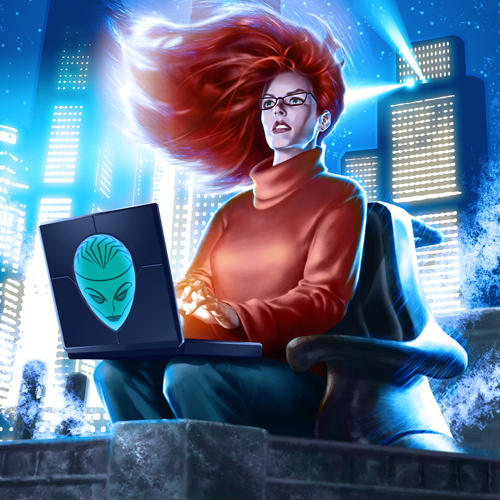 Yes, Oracle, not Batgirl. Despite Barbara Gordon's running across rooftops and taking down bad guys as Batgirl also being heroic, she became a symbol for the handicapped after being shot for the Joker and getting stuck in a wheelchair. She didn't let her disability end her crime fighting career. Instead, she used her computer skills to become a valuable asset to any superhero, not just Batman.
Women in comics can be examples of true heroism and something we can all look up to. But the stories these characters are involved in can really put a damper on how upstanding they are. Which is why next time I'm going to be focusing on the darkest part of women in comics: violence against women.
Part 6 - Abusing Women in Comics
Yes, Oracle, not Batgirl. Despite Barbara Gordon's running across rooftops and taking down bad guys as Batgirl also being heroic, she became a symbol for the handicapped after being shot for the Joker and getting stuck in a wheelchair. She didn't let her disability end her crime fighting career. Instead, she used her computer skills to become a valuable asset to any superhero, not just Batman.
Women in comics can be examples of true heroism and something we can all look up to. But the stories these characters are involved in can really put a damper on how upstanding they are. Which is why next time I'm going to be focusing on the darkest part of women in comics: violence against women.
Part 6 - Abusing Women in Comics
 There are several qualities that have hurt the overall portrayal of women in comics and several suggestions from the interwebs and myself that I think could help further equality in comics. That's what this new series, "Women in Comics: Do the Super Ladies Need Saving?" is all about. Inspired from a Gender Studies inquiry project and a "Gender and Comics" survey I created a couple of weeks back, this series will take an indepth look at women's portrayal in comics. It was originally going to be one feature, but after hitting almost 4,000 words I thought people were much more likely to stay awake if I made it into multiple parts.
If there's a particular topic you'd like me to talk about, let me know! I already have a lot planned including the way women in comics look, the way they dress, how women of race and other ethnicities are treated in comics, how women in comics are abused and I'll be listing some empowering women in comics. But today, it's a more positive piece about some empowering women in comic books.
For most of the examples I'm going to be using the two mainstream comic book companies Marvel and DC Comics. Independents and other publishers like Image Comics and Dynamite Entertainment have their problems too, but the "Big Two" are the comics that are most widely read, meaning they have a huge impact when it comes to how women are portrayed in comics. These examples are also not limited to just superpowered heroines but also non-superpowered beings and villains.
Please check out the first four parts of "Women in Comics: Do the Super Ladies Need Saving?"
Part 1 - Beauty: One Size Fits All?
Part 2 - Victoria Secret-esque Styles
Part 3 - What's so bad about a broken back?
Part 4 - Time for a close-up...
Empowering Women in Comics
There are paragraphs worth of problems with women in comics. But there are several positive female characters in comics and I'd like to spotlight a couple of my favorites and urge writers to create more characters like them.
Princess Adrienne
There are several qualities that have hurt the overall portrayal of women in comics and several suggestions from the interwebs and myself that I think could help further equality in comics. That's what this new series, "Women in Comics: Do the Super Ladies Need Saving?" is all about. Inspired from a Gender Studies inquiry project and a "Gender and Comics" survey I created a couple of weeks back, this series will take an indepth look at women's portrayal in comics. It was originally going to be one feature, but after hitting almost 4,000 words I thought people were much more likely to stay awake if I made it into multiple parts.
If there's a particular topic you'd like me to talk about, let me know! I already have a lot planned including the way women in comics look, the way they dress, how women of race and other ethnicities are treated in comics, how women in comics are abused and I'll be listing some empowering women in comics. But today, it's a more positive piece about some empowering women in comic books.
For most of the examples I'm going to be using the two mainstream comic book companies Marvel and DC Comics. Independents and other publishers like Image Comics and Dynamite Entertainment have their problems too, but the "Big Two" are the comics that are most widely read, meaning they have a huge impact when it comes to how women are portrayed in comics. These examples are also not limited to just superpowered heroines but also non-superpowered beings and villains.
Please check out the first four parts of "Women in Comics: Do the Super Ladies Need Saving?"
Part 1 - Beauty: One Size Fits All?
Part 2 - Victoria Secret-esque Styles
Part 3 - What's so bad about a broken back?
Part 4 - Time for a close-up...
Empowering Women in Comics
There are paragraphs worth of problems with women in comics. But there are several positive female characters in comics and I'd like to spotlight a couple of my favorites and urge writers to create more characters like them.
Princess Adrienne
 The princess of Princeless, Princess Adrienne's story is all about a princess who decides she's going to save herself. Adrienne is smart and she doesn't let stereotypes about women stop her in her quest to save her sisters. The publishers of the comic, Action Lab, seem to have a good habit of having powerful women in their comics. Not only is there Princess Adrienne, but she has a friend named Bedelia who defies the gender norms of their fantasy land by being a blacksmith and Jamal Ingle created the rambunctious, heroic and covered-up super heroine Molly Danger. Even their adult line has some notable females like Karen from Sensory Distortion who isn't your typical goth teenager.
Firestar
The princess of Princeless, Princess Adrienne's story is all about a princess who decides she's going to save herself. Adrienne is smart and she doesn't let stereotypes about women stop her in her quest to save her sisters. The publishers of the comic, Action Lab, seem to have a good habit of having powerful women in their comics. Not only is there Princess Adrienne, but she has a friend named Bedelia who defies the gender norms of their fantasy land by being a blacksmith and Jamal Ingle created the rambunctious, heroic and covered-up super heroine Molly Danger. Even their adult line has some notable females like Karen from Sensory Distortion who isn't your typical goth teenager.
Firestar
 Angelica Jones, a.k.a. Firestar, was bullied in school and despite that she's as sweet as could be – even to her abusers! She also is a breast cancer survivor who was still able to stay strong and even crack some jokes while she was battling for her life, not unlike what she does everyday when she goes out and saves people! The cancer took all of her hair but not her spirit and she was never one to harp on her looks, a characteristic I always loved about her! She lead her own team and even stopped superheroing for a while so she could get a college degree and make something of herself without the mask.
Spider-Girl
Angelica Jones, a.k.a. Firestar, was bullied in school and despite that she's as sweet as could be – even to her abusers! She also is a breast cancer survivor who was still able to stay strong and even crack some jokes while she was battling for her life, not unlike what she does everyday when she goes out and saves people! The cancer took all of her hair but not her spirit and she was never one to harp on her looks, a characteristic I always loved about her! She lead her own team and even stopped superheroing for a while so she could get a college degree and make something of herself without the mask.
Spider-Girl
 Again, possibly my favorite comic book character of all-time (regardless of gender), May "Mayday" Parker is another intelligent girl who manages to study for exams, play basketball and become a super heroine. May cares about others and even when she disobeys her parents she does it for the greater good.
Harper Row
Again, possibly my favorite comic book character of all-time (regardless of gender), May "Mayday" Parker is another intelligent girl who manages to study for exams, play basketball and become a super heroine. May cares about others and even when she disobeys her parents she does it for the greater good.
Harper Row
 You don't need to save someone's life to be considered a superhero. Harper Row has to be my favorite thing out of DC since the New 52 started. When her gay brother was beaten by gay-bashers and had the words "fag" shaved on the back of his head in Batman #12, Harper did the same thing to her hair to support her brother. She's a character who isn't afraid to fight homophobia or comfort Batman when he really needs it. She also refrains from letting herself be manipulated by her crooked father despite their shared blood. She's such an inspiration I was begging DC to make her Robin.
Oracle
You don't need to save someone's life to be considered a superhero. Harper Row has to be my favorite thing out of DC since the New 52 started. When her gay brother was beaten by gay-bashers and had the words "fag" shaved on the back of his head in Batman #12, Harper did the same thing to her hair to support her brother. She's a character who isn't afraid to fight homophobia or comfort Batman when he really needs it. She also refrains from letting herself be manipulated by her crooked father despite their shared blood. She's such an inspiration I was begging DC to make her Robin.
Oracle
 Yes, Oracle, not Batgirl. Despite Barbara Gordon's running across rooftops and taking down bad guys as Batgirl also being heroic, she became a symbol for the handicapped after being shot for the Joker and getting stuck in a wheelchair. She didn't let her disability end her crime fighting career. Instead, she used her computer skills to become a valuable asset to any superhero, not just Batman.
Women in comics can be examples of true heroism and something we can all look up to. But the stories these characters are involved in can really put a damper on how upstanding they are. Which is why next time I'm going to be focusing on the darkest part of women in comics: violence against women.
Part 6 - Abusing Women in Comics
Yes, Oracle, not Batgirl. Despite Barbara Gordon's running across rooftops and taking down bad guys as Batgirl also being heroic, she became a symbol for the handicapped after being shot for the Joker and getting stuck in a wheelchair. She didn't let her disability end her crime fighting career. Instead, she used her computer skills to become a valuable asset to any superhero, not just Batman.
Women in comics can be examples of true heroism and something we can all look up to. But the stories these characters are involved in can really put a damper on how upstanding they are. Which is why next time I'm going to be focusing on the darkest part of women in comics: violence against women.
Part 6 - Abusing Women in Comics